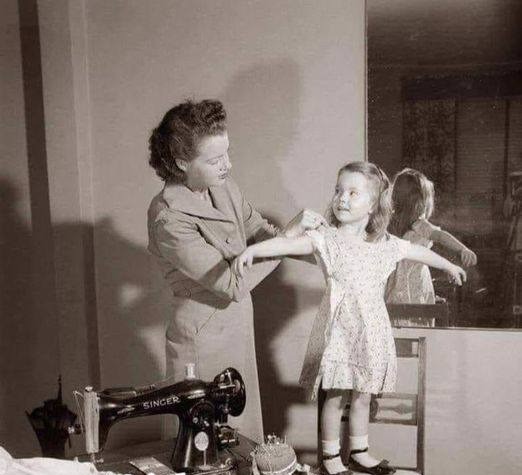
Revisiting Homemade Fashion: The Nostalgia And Craftsmanship Of Mom’s Creations
The Charm of Homemade Clothing in a Modern World
In today’s age of rapid fashion trends and online shopping, the art of making clothes at home is a treasured memory for many. The warm image of a mother sewing for her child, as depicted in nostalgic memories, invites a reflection on the care and love woven into each homemade garment. This article explores the history, craftsmanship, and cultural importance of home-sewn clothing and its ongoing appeal.
The Tradition of Home Sewing
Before the era of mass production, making clothes at home was a common and necessary practice for many households. The picture of mothers or grandmothers spending hours at a sewing machine transforming fabric into personal garments represents an era where clothing was not just functional but also an expression of artistry, love, and practicality.
Passing Down a Craft
Sewing and tailoring are skills often handed down through generations. Typically learned at home, children would pick up these skills by observing and assisting their parents. This tradition ensured that each generation could provide for their family with unique and custom-made clothing.
The ability to sew was a sign of resourcefulness, especially during times of financial strain or limited resources. It allowed families to express their creativity and maintain their individuality while staying within budget.
The Personal Touch of Handmade Garments
One of the most cherished aspects of homemade clothing is the personal touch it carries. Unlike mass-produced items, handmade clothes were crafted to fit perfectly and often featured unique customizations. From fabric choices to personal embellishments, each garment had its own story.
Wearing clothes made by a loved one brought pride and comfort, knowing that someone had invested their time and skill into creating something special. This contrasts sharply with the often impersonal nature of modern fashion.
The Rise of Fast Fashion
With the evolution of the fashion industry, the advent of fast fashion has transformed clothing into a more affordable and accessible commodity. This change led to a decline in homemade clothing, as buying new items became more practical and economical than making them.
However, this shift has also highlighted concerns about the environmental and social consequences of fast fashion, such as waste and ethical issues. As a result, some people are returning to home sewing as a sustainable and ethical choice.
The Revival of DIY Fashion
Recently, there has been a renewed interest in DIY fashion and homemade clothing. Many individuals are revisiting sewing as a hobby, aiming to create distinctive and personalized garments that stand out from mass-produced options.
Online platforms have made learning sewing skills and sharing creative ideas more accessible. This trend is about more than just fashion; it’s about reclaiming creativity and individuality in a world of uniformity.
Reflecting on the Past and Looking Forward
The image of a mother sewing for her child serves as a poignant reminder of the deep cultural and personal value of homemade clothing. It brings back memories of a time when garments were more than just items to wear—they were crafted with love, skill, and personal history.
As we navigate the complexities of modern fashion, looking back can inspire us to adopt more mindful practices, whether by making our own clothes, supporting ethical brands, or valuing garments with sentimental significance.
Conclusion
Homemade clothing remains a symbol of care, craftsmanship, and tradition. Reflecting on the past and considering the future, we are reminded of the importance of personal touch in a world that often feels impersonal. Whether or not your mother made your clothes, the enduring appeal of handmade garments continues to resonate deeply.